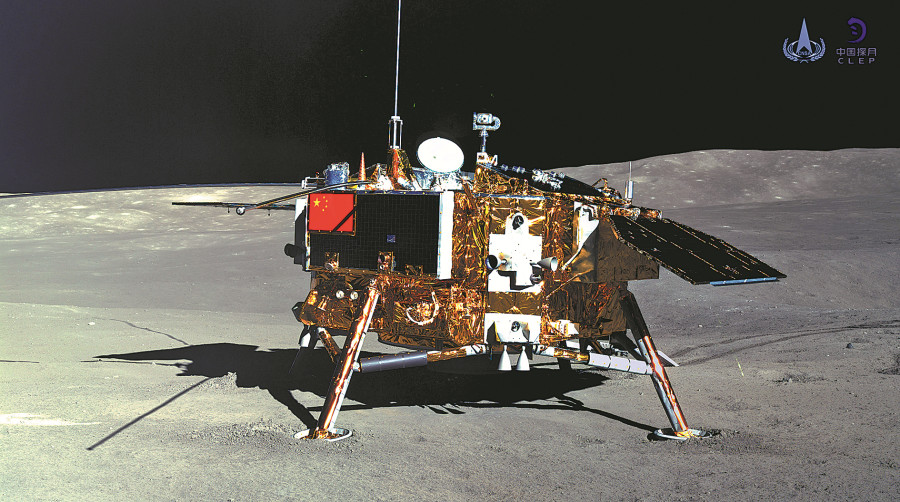China's Chang'e-4 probe switches to dormant mode
Both the lander and the rover of the Chang'e-4 probe switched to dormant mode for the lunar night on the far side of the moon on Tuesday morning (Beijing Time).
Both the lander and the rover of the Chang'e-4 probe switched to dormant mode for the lunar night on the far side of the moon on Tuesday morning (Beijing Time).

Photo taken by the rover Yutu 2 (Jade Rabbit-2) on Jan 11, 2019 shows the lander of the Chang'e 4 probe. [Photo/China National Space Administration]
The scientific instruments on the Chang'e-4 probe worked well during the seventh lunar day after the probe made the first-ever soft-landing on the Von Karman Crater in the South Pole-Aitken Basin on the far side of the moon on Jan. 3, according to the Lunar Exploration and Space Program Center of the China National Space Administration.
A new batch of 1.2 G scientific detection data obtained by the probe was sent to the core research team for analysis in early July.
A lunar day equals 14 days on Earth, and a lunar night is the same length. The Chang'e-4 probe switched to a dormant mode during the lunar night due to the lack of solar power.
As a result of the tidal locking effect, the moon's revolution cycle is the same as its rotation cycle, and the same side always faces Earth.
The scientific tasks of the Chang'e-4 mission include low-frequency radio astronomical observation, surveying the terrain and landforms, detecting the mineral composition and shallow lunar surface structure and measuring neutron radiation and neutral atoms.
The Chang'e-4 mission embodies China's hope to combine human wisdom in space exploration with four payloads developed by the Netherlands, Germany, Sweden and Saudi Arabia.

